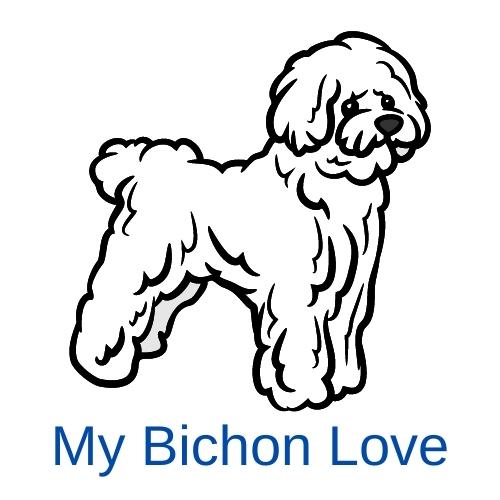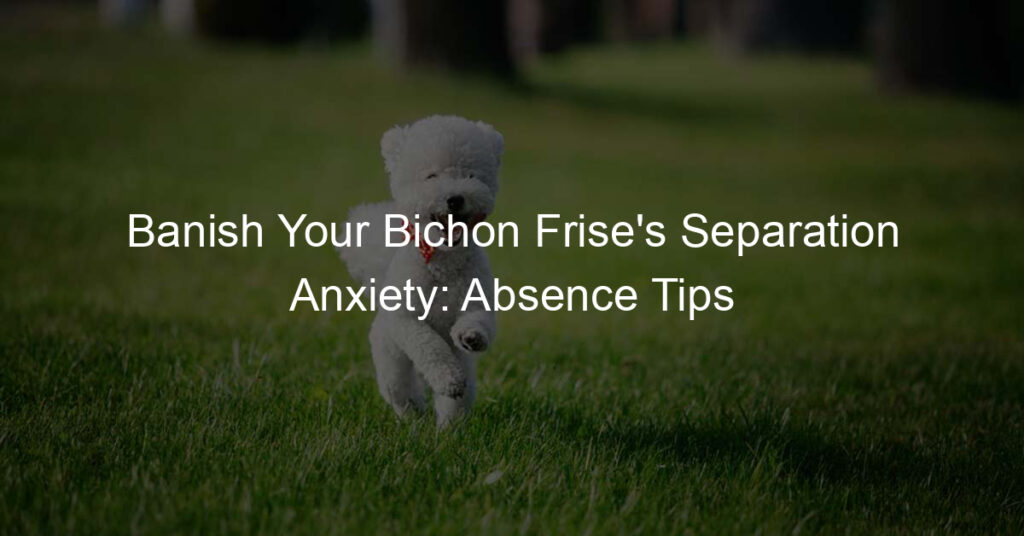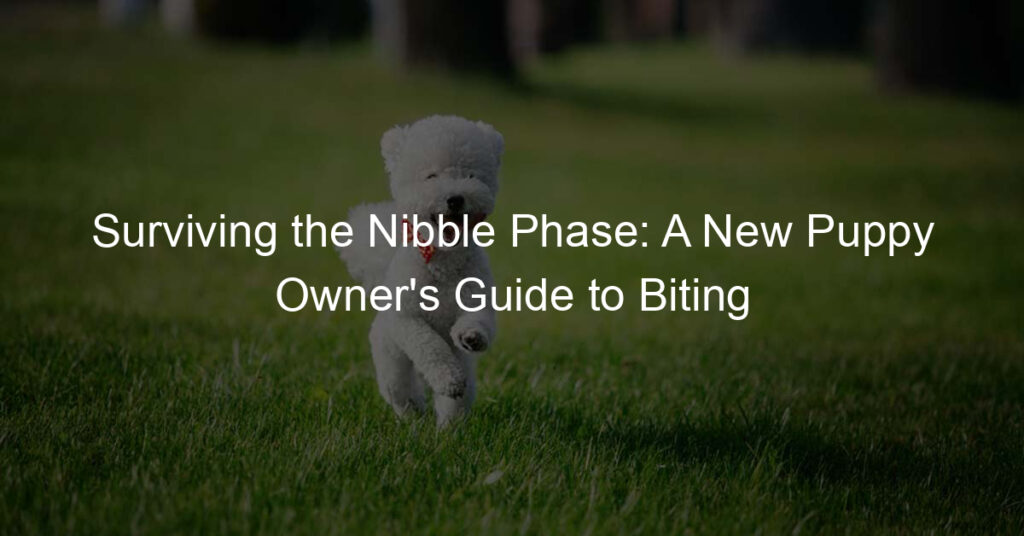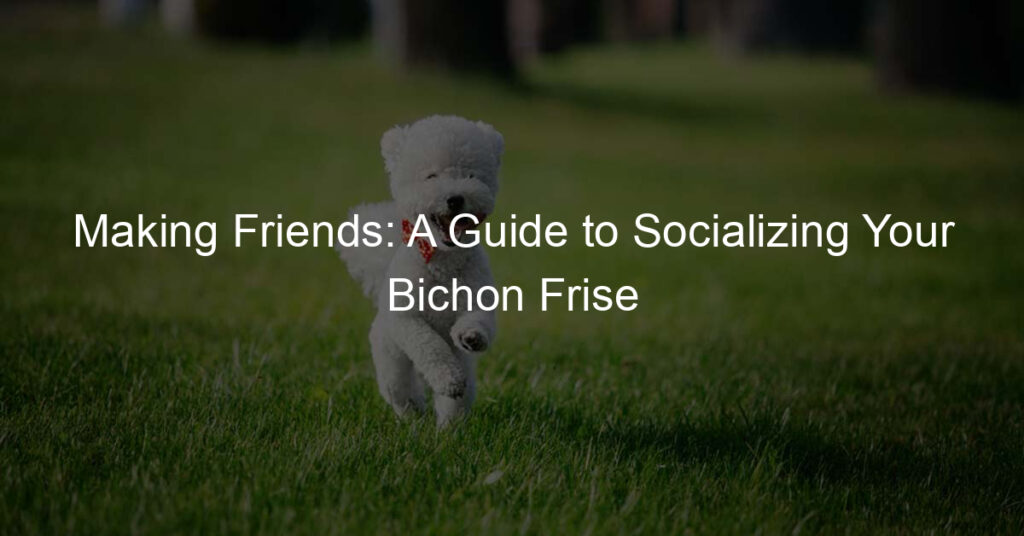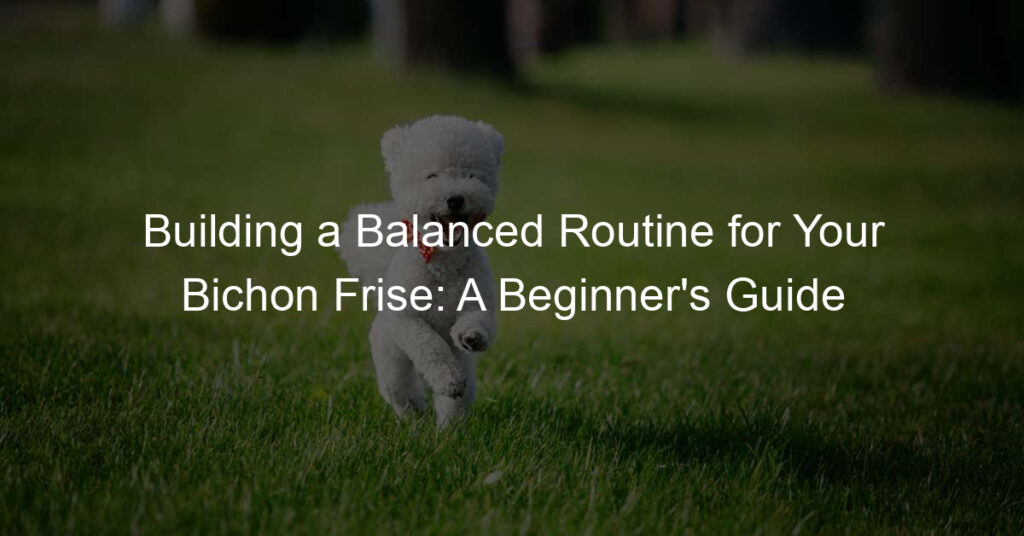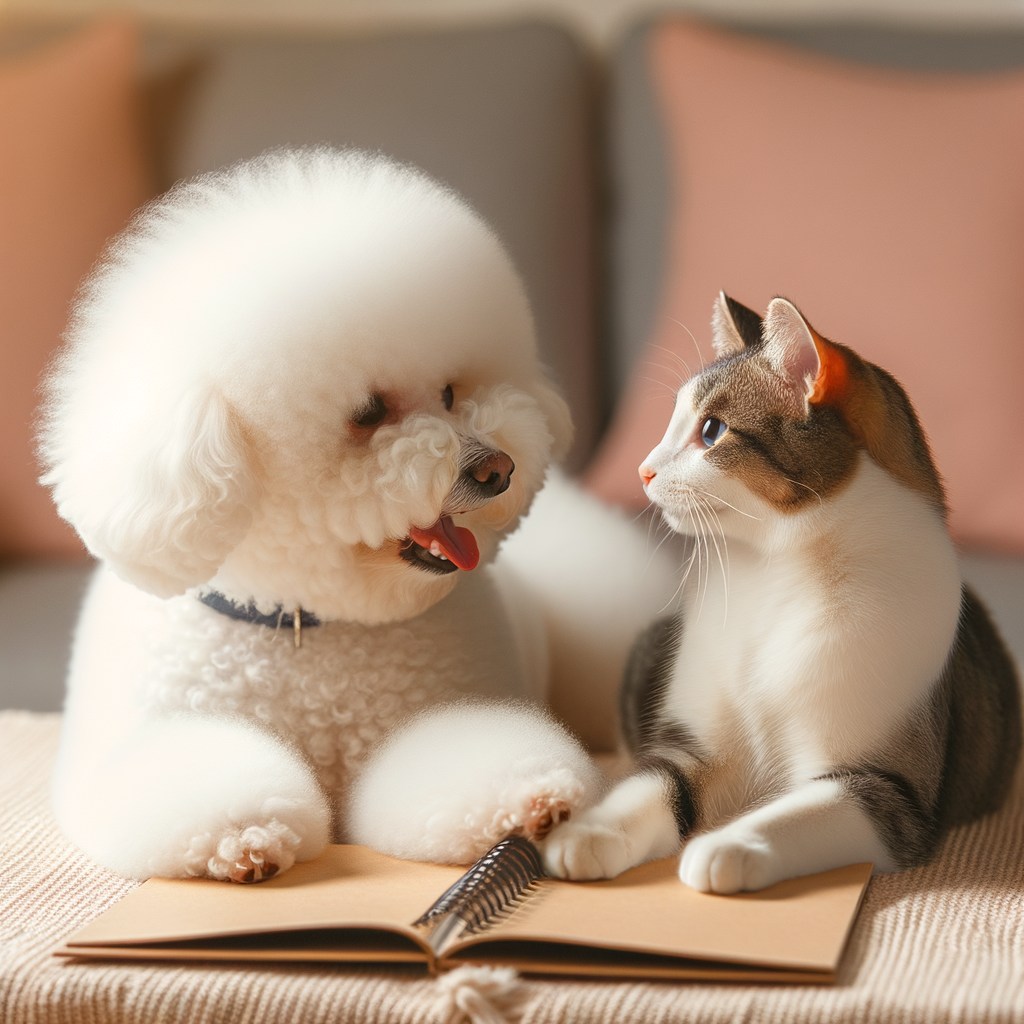
Introduction to Bichon Frises and Cats
When it comes to pets, Bichon Frises and cats are among the most loved. Each has unique characteristics that make them special. Let’s take a closer look at these two popular pets.
- Overview of Bichon Frises
- Overview of Cats
The Bichon Frise is a small breed of dog known for its cheerful disposition and fluffy white coat. Originating from the Mediterranean area, these dogs are known for their sociable and playful nature. They are great companions and are known for their love of human interaction. Bichon Frises are also known for their intelligence and agility, making them easy to train. Despite their small size, they are sturdy and resilient, making them suitable for both apartment living and larger homes.
Cats are one of the oldest and most revered pets in human history. They come in a variety of breeds, each with its unique characteristics. Cats are known for their independence and aloofness, but they can also form strong bonds with their human companions. They are low-maintenance pets, requiring less attention and care compared to dogs. Cats are known for their agility and hunting skills, often keeping homes free from pests. They are perfect for individuals who want a pet that offers companionship but also values its independence.
Understanding the nature and characteristics of Bichon Frises and cats is the first step towards creating a harmonious environment for them. In the following sections, we will explore their compatibility, coexistence, and ways to build and maintain a peaceful relationship between them.
Bichon Frises Cat Compatibility
Understanding the behavior of Bichon Frises is crucial to assess their compatibility with cats. Let’s delve into the general behavior of Bichon Frises and how they interact with other animals.
Understanding Bichon Frises Behavior
- General behavior of Bichon Frises
- Bichon Frises behavior with other animals
Bichon Frises are known for their cheerful and playful nature. They are friendly dogs that love being the center of attention. They are highly sociable and enjoy being around people and other animals. Despite their small size, they are quite energetic and require regular exercise. They are intelligent dogs, which makes them easy to train. However, they can sometimes be stubborn, so patience is key when training them.
Bichon Frises generally get along well with other animals. They are not aggressive dogs and are usually friendly towards other dogs and pets. However, their interaction with other animals largely depends on their socialization. A Bichon Frise that is well-socialized from a young age will likely be more comfortable around other animals, including cats. It’s important to remember that every dog is an individual, and their behavior can vary.
In conclusion, Bichon Frises have a friendly and sociable nature that can make them compatible with cats. However, their behavior with other animals can vary based on their individual personality and socialization. Therefore, it’s important to properly socialize your Bichon Frise to ensure a harmonious relationship with your cat.
Understanding Cat Behavior
When it comes to understanding cat behavior, it’s important to remember that every cat is unique. However, there are some general behaviors that most cats exhibit. Let’s delve into these behaviors to better understand our feline friends.
- General behavior of cats
- Cats behavior with other animals
Cats are known for their independence and aloofness, but this doesn’t mean they don’t enjoy companionship. They are territorial creatures and often mark their territory by scratching. Cats also have a strong hunting instinct, which is why they often chase after toys or small objects. They communicate through a variety of vocalizations, body postures, and facial expressions. For instance, a cat with a straight tail is usually relaxed and content, while a cat with a puffed-up tail is likely scared or agitated.
Cats can be social creatures, but their behavior with other animals can vary greatly. Some cats may be friendly and playful with other pets, while others may be more reserved or even aggressive. This largely depends on the cat’s personality and past experiences. Cats typically show dominance by hissing, growling, or swatting. On the other hand, a cat that is comfortable with another animal may show signs of affection such as purring, rubbing against them, or grooming them.
In conclusion, understanding cat behavior can help us build a stronger bond with our feline friends. It can also help us ensure that they are comfortable and happy in their environment, especially when they are sharing their space with other pets like Bichon Frises.
Bichon Frises Cat Friendship: Can They Coexist?
Many pet owners often wonder if their Bichon Frises can coexist peacefully with cats. The answer is yes, they can! However, the key to a successful friendship lies in understanding their interactions and managing them effectively.
Bichon Frises and Cats Interaction
Let’s delve deeper into the dynamics of the interaction between Bichon Frises and cats.
- First interaction between Bichon Frises and Cats
- How to manage their interaction
The first interaction between a Bichon Frise and a cat is crucial. It sets the tone for their future relationship. Both animals should be introduced to each other in a calm and controlled environment. Allow them to sniff each other from a safe distance. Remember, patience is key in this process. It may take a few meetings before they start feeling comfortable around each other.
Managing the interaction between your Bichon Frise and cat is essential. Supervise their initial meetings to prevent any aggressive behavior. Reward positive interactions with treats to encourage good behavior. If either pet shows signs of stress or aggression, separate them immediately and try again later. Over time, they should learn to tolerate, if not enjoy, each other’s company.
In conclusion, Bichon Frises and cats can indeed coexist and even become great friends. The key lies in careful introduction and management of their interactions. With patience and understanding, your Bichon Frise and cat can form a bond that enriches both their lives.
Bichon Frises and Cats Coexistence
Living harmoniously with different pets under one roof can be a challenge. However, with the right conditions and understanding, Bichon Frises and cats can coexist peacefully. Let’s delve into the living conditions that favor both pets and a case study of a successful coexistence story.
- Living conditions for Bichon Frises and Cats
Creating a conducive environment for both Bichon Frises and cats requires understanding their individual needs. Both pets need their own space, so ensure you have separate areas for each. Bichon Frises, being playful and energetic, need space to run and play. Cats, on the other hand, prefer quiet and high places where they can observe their surroundings.
Both pets should have their own food and water dishes, and their feeding areas should be separate to avoid conflicts. It’s also essential to maintain cleanliness in their living areas to prevent health issues. Regular vet visits are crucial to ensure both pets are healthy.
- Case study: A successful coexistence story
Let’s look at a real-life example of a successful coexistence between a Bichon Frise and a cat. Meet Bella, a Bichon Frise, and Whiskers, a domestic short-haired cat. Their owner, Mrs. Johnson, introduced them to each other when they were both young, which experts suggest is the best time for introductions.
Initially, Bella was overly excited and Whiskers was a bit apprehensive. However, Mrs. Johnson ensured they had separate spaces and gradually increased their time together under supervision. She also used positive reinforcement techniques to encourage good behavior.
Over time, Bella and Whiskers became comfortable with each other. They now share the same living space, play together, and even nap together. This story shows that with patience, understanding, and the right conditions, Bichon Frises and cats can indeed coexist peacefully.
Feline Friends with Bichon Frises: Building a Relationship
Building a relationship between a Bichon Frise and a cat can be a rewarding experience. It’s all about understanding their unique personalities and creating a safe and comfortable environment for both. Let’s explore the bonding process and how to strengthen their bond.
Bichon Frises Cat Relationship: The Bonding Process
The bonding process between a Bichon Frise and a cat is a gradual one. It requires patience, understanding, and a lot of love. Here are some steps to introduce a Bichon Frise to a cat and ways to strengthen their bond.
- Steps to introduce a Bichon Frise to a Cat
- How to strengthen their bond
Introducing a Bichon Frise to a cat should be done slowly and carefully. Start by allowing them to smell each other’s scent on a blanket or toy. Then, introduce them in a controlled environment, keeping the Bichon Frise on a leash. Allow them to observe each other from a distance. Gradually decrease the distance over time, always monitoring their reactions. Reward positive interactions with treats and praise.
Strengthening the bond between a Bichon Frise and a cat involves spending quality time together. Engage them in shared activities like playing with toys or lounging together. Always supervise their interactions to ensure they are positive. Over time, they will learn to trust and understand each other, strengthening their bond.
Remember, every Bichon Frise and cat is unique. What works for one pair may not work for another. The key is patience and understanding. With time, your Bichon Frise and cat can become the best of friends.
Cat-Friendly Bichon Frises: Training and Adaptation
Training your Bichon Frise to be cat-friendly is an important step in ensuring a peaceful coexistence between your furry friends. Here, we will explore effective training techniques and key takeaways for successful training.
Training Bichon Frises to be Cat-Friendly
Training a Bichon Frise to be cat-friendly involves patience, consistency, and understanding. Let’s delve into the specifics.
- Training techniques for Bichon Frises
- Key takeaways for successful training
Start with gradual introductions. Allow your Bichon Frise and cat to sniff each other’s scent before they meet face-to-face. This can be done by swapping blankets or toys. Once they meet, keep the interactions short and positive, gradually increasing the time they spend together.
Use positive reinforcement. Reward your Bichon Frise with treats and praise when they behave calmly around the cat. This will help them associate good behavior with rewards.
Provide separate spaces. Both your Bichon Frise and cat should have their own safe spaces where they can retreat if they feel threatened or overwhelmed.
Patience is key. It may take time for your Bichon Frise to adjust to the presence of a cat. Don’t rush the process.
Consistency is crucial. Stick to the training routine and don’t allow any negative interactions between your pets.
Understanding your pet’s behavior is important. Pay attention to their body language and intervene if you notice any signs of aggression or fear.
In conclusion, training your Bichon Frise to be cat-friendly is a process that requires time, patience, and understanding. However, with the right techniques and consistency, it is possible to foster a peaceful and friendly relationship between your Bichon Frise and cat.
Adapting Cats to Bichon Frises
Adapting cats to a new environment, especially one with a Bichon Frise, can be a challenging task. However, with the right techniques and understanding, it is possible to create a harmonious living situation for both pets. Let’s explore some of these techniques and key takeaways.
- Adaptation techniques for Cats
- Slow Introduction: Start by keeping the pets in separate rooms. Gradually let them sniff each other’s items, such as toys or bedding, to get used to their scents.
- Controlled Meetings: Once they are comfortable with each other’s scent, arrange short, supervised meetings. Keep the interactions positive and reward both pets for good behavior.
- Shared Activities: Engage them in shared activities like feeding or playing at the same time but in separate areas. This helps them associate each other’s presence with positive experiences.
- Key takeaways for successful adaptation
- Patience is Key: Remember, adaptation takes time. Don’t rush the process. Allow both pets to adjust at their own pace.
- Positive Reinforcement: Reward both pets for good behavior. This encourages them to repeat the behavior and helps in building a positive relationship.
- Consistency: Be consistent in your approach. Sudden changes can confuse the pets and disrupt the adaptation process.
Introducing a cat to a Bichon Frise requires patience and a step-by-step approach. Here are some effective techniques:
Successful adaptation of a cat to a Bichon Frise involves understanding and implementing a few key points:
In conclusion, adapting cats to Bichon Frises is a process that requires patience, consistency, and positive reinforcement. By following these techniques and key takeaways, you can help your pets build a harmonious relationship.
Bichon Frises Cats Harmony: Maintaining a Peaceful Environment
Creating a peaceful environment for your Bichon Frise and cat is essential for their happiness and well-being. With the right approach, these two pets can live together in harmony. Let’s explore how to ensure a peaceful coexistence and the signs that show they are living peacefully.
Ensuring a Peaceful Coexistence
Ensuring a peaceful coexistence between your Bichon Frise and cat involves understanding their unique needs and behaviors. It’s about creating a safe and comfortable space for both, where they can interact positively.
- Signs of a peaceful coexistence
- They are comfortable in each other’s presence and can share the same space without showing signs of stress or fear.
- They show positive body language towards each other, such as relaxed ears and tails, and non-aggressive eye contact.
- They engage in positive interactions, like playing together or grooming each other.
- How to maintain harmony between Bichon Frises and Cats
- Provide separate spaces for each pet to retreat to when they need some alone time.
- Ensure both pets are properly socialized and trained to interact positively with each other.
- Monitor their interactions and intervene if necessary to prevent any potential conflicts.
- Regularly spend quality time with each pet individually to ensure they both feel loved and valued.
There are several signs that your Bichon Frise and cat are coexisting peacefully. These include:
Maintaining harmony between a Bichon Frise and a cat involves several steps:
In conclusion, while Bichon Frises and cats have different needs and behaviors, they can coexist peacefully with the right approach. By understanding the signs of a peaceful coexistence and taking steps to maintain harmony, you can create a happy and peaceful environment for both your pets.
